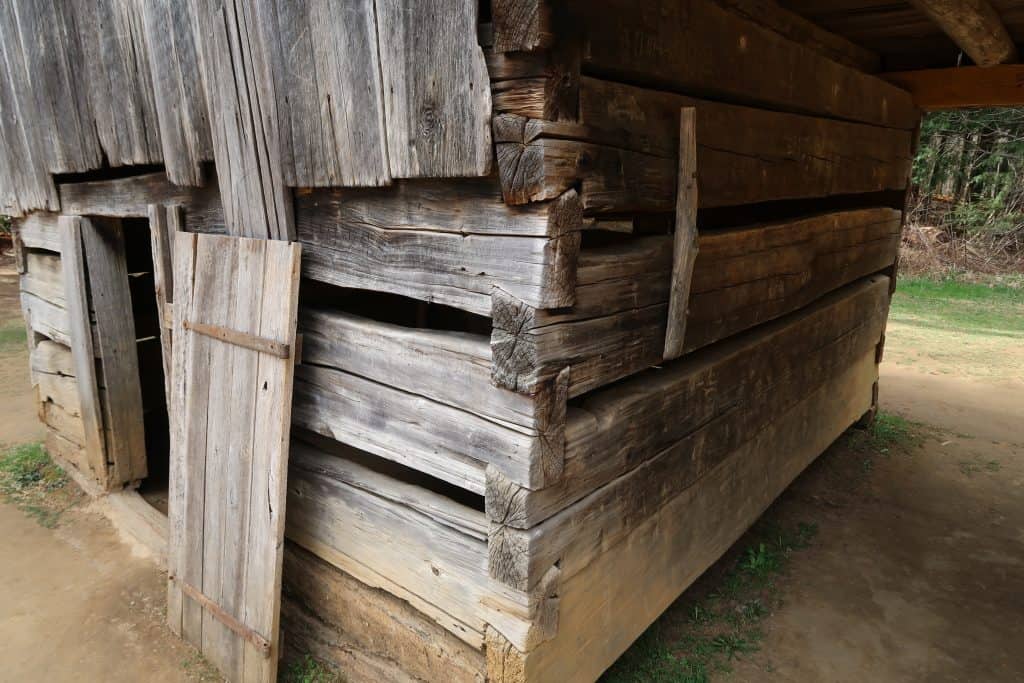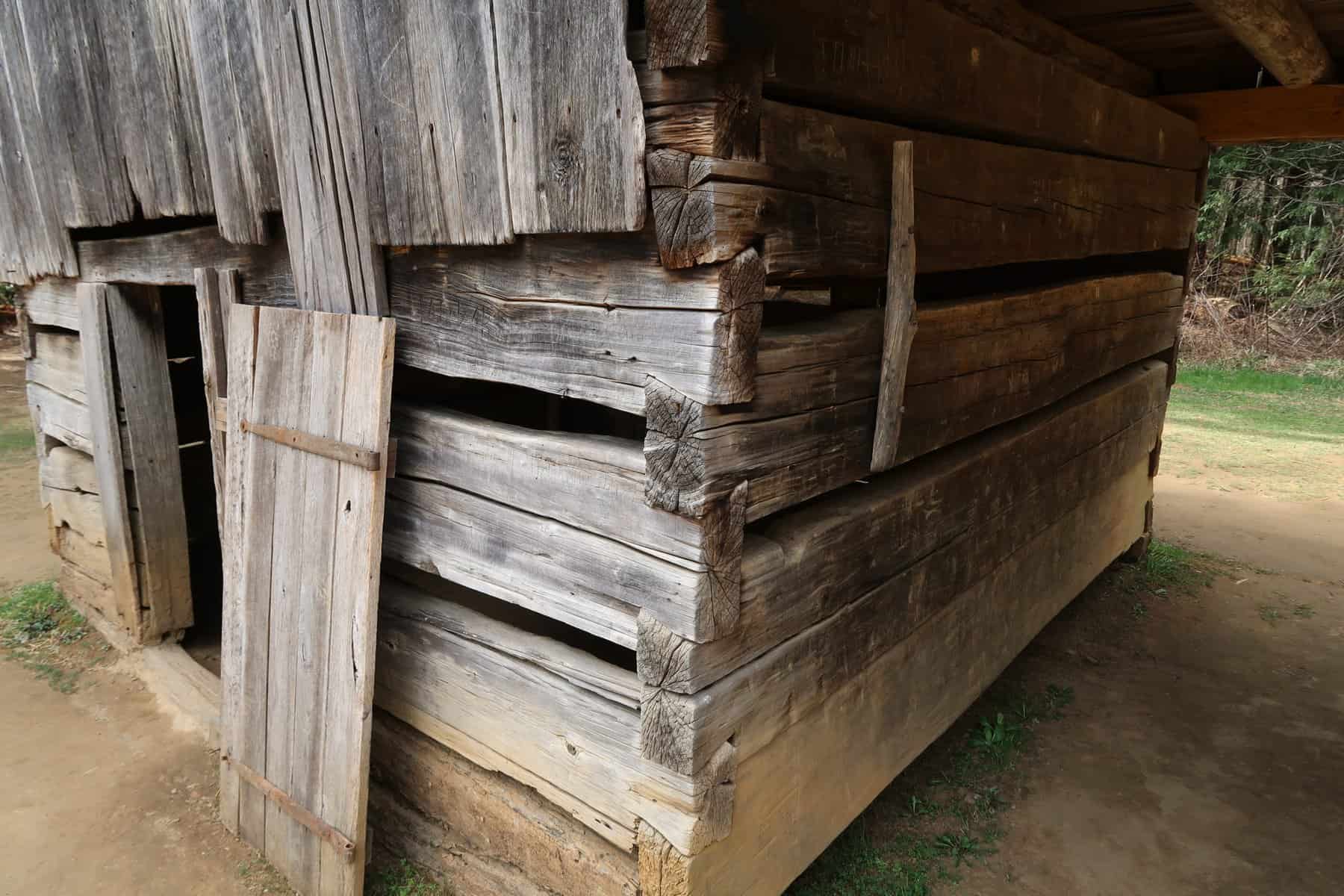The Great Smoky Mountains National Park is known for its stunning natural beauty, but what many visitors may not realize is that the park was once home to a thriving agricultural community! From the early settlers who cleared the land and established homesteads, to the generations of farmers who worked the fields and raised livestock, the farming history of Great Smoky Mountains National Park is a story of perseverance, hard work, and the enduring spirit of the Appalachian people.

The Early Years of Farming in Great Smoky Mountains National Park
The story of farming in Great Smoky Mountains National Park begins long before the park was established in 1934.
The first European settlers arrived in the region in the late 1700s. They quickly began clearing the land to make way for crops and livestock. These early settlers were largely self-sufficient. They grew their own food and relied on hunting and fishing to supplement their diets.
As the population of the region grew, so too did the demand for agricultural products. By the mid-1800s, the Great Smoky Mountains region had become a hub of agriculture. Farmers grew a wide variety of crops including corn, wheat, oats, and vegetables. Livestock farming was also common as farmers raised cattle, hogs, and sheep.
The Impact of Farming on the Great Smoky Mountains Landscape
The impact of farming on the landscape of Great Smoky Mountains National Park is still visible today. Visitors to the park can see evidence of the region’s agricultural past through many of the park’s exhibits. Cade’s Cove, on the western side of the park, is one of the favorite areas to explore old homesteads and farm buildings.
The park’s landscape is also shaped by the historic land use practices of the region including the construction of dry-stone walls and the clearing of land for farming.
One of the most significant impacts of farming on the Great Smoky Mountains landscape was the creation of the park’s iconic open meadows. These meadows were created by farmers clearing the land for pasture and hay fields. The open spaces they created are now critical habitat for a wide variety of plant and animal species.
Challenges Facing Farmers in Great Smoky Mountains National Park
Farming in Great Smoky Mountains National Park was not without its challenges. The region’s rugged terrain and unpredictable weather made farming a difficult and often dangerous occupation. Farmers in the region also faced a number of social and economic challenges. As the area was remote, there was limited access to markets and infrastructure.
In the early 1900s, the advent of the railroad brought new opportunities for farmers in the region. With improved transportation, farmers were able to transport their crops to markets outside the region. This led to a boom in agriculture in the Great Smoky Mountains. However, the traditionally self-reliant farming practices changed as farmers began to specialize in crops that could be sold for a profit.
The End of Farming in Great Smoky Mountains National Park
Despite the challenges facing farmers in the region, agriculture in the Great Smoky Mountains continued to thrive into the early 1900s.
However, the establishment of the Great Smoky Mountains National Park in 1934 marked the beginning of the end for farming in the region. Many of the farmers who had lived and worked in the area for generations were forced to leave their homes and land.
While some farmers were able to negotiate leases with the park service and continue farming in the park, these leases were often short-term and came with restrictions. Over time, farming in the park became increasingly difficult, and by the 1950s most of the farms in the region had been abandoned.
Today, the remnants of the farming history of Great Smoky Mountains National Park can still be seen throughout the park. Visitors can explore old farmsteads, barns, and fields, and see how the landscape was shaped by the agricultural past.
Many of these sites have been preserved and interpreted by the National Park Service. For visitors, it provides a glimpse into the lives of the farmers who once lived and worked in the area.
The Mountain Farm Museum
The Mountain Farm Museum at Great Smoky Mountains National Park is a unique open-air museum that showcases the region’s farming communities. The museum is located in North Carolina near the park’s Oconaluftee Visitor Center. It features a collection of historic farm buildings.
Visitors can explore a farmhouse, barn, smokehouse, applehouse, and blacksmith shop. Visitors can also learn about the daily life and work of mountain farmers in the late 19th and early 20th centuries.
The museum also hosts demonstrations of traditional crafts such as weaving, spinning, and quilting. The Mountain Farm Museum is one of the many park opportunities for visitors to learn more about the history and culture of the Appalachian region. It is a must-see destination for anyone visiting Great Smoky Mountains National Park.
Preserving the Legacy of Farming in Great Smoky Mountains National Park
The National Park Service is committed to preserving the legacy of farming in Great Smoky Mountains National Park. In addition to preserving historic structures and sites, the park service is working to restore and maintain the park’s open meadows. These meadows provide critical habitat for a variety of plant and animal species. The park service is also working to promote sustainable agriculture practices in the region.
Visiting Great Smoky Mountains National Park
If you’re interested in learning more about the farming history of Great Smoky Mountains National Park, there are a number of resources available. The park service offers a variety of interpretive programs and exhibits that explore the region’s agricultural past. There are also guided tours of historic farmsteads and other sites.
Visitors can also explore some the park’s many hiking trails which offer stunning views of the region’s open meadows and other agricultural landscapes. For those who want to get a more hands-on experience, the park service offers volunteer opportunities including historic structure maintenance.
The farming history of Great Smoky Mountains National Park is a fascinating and often overlooked aspect of the region’s cultural heritage. From the early settlers to the generations of farmers who worked the fields and raised livestock, the farming history is a testament to the enduring spirit of the Appalachian people.
While the end of farming in the park marked the end of an era, the legacy of farming in the region lives on. The park’s many exhibits, museums, and structures ensure that the farming history of Great Smoky Mountains National Park will continue to inspire and educate future generations.

